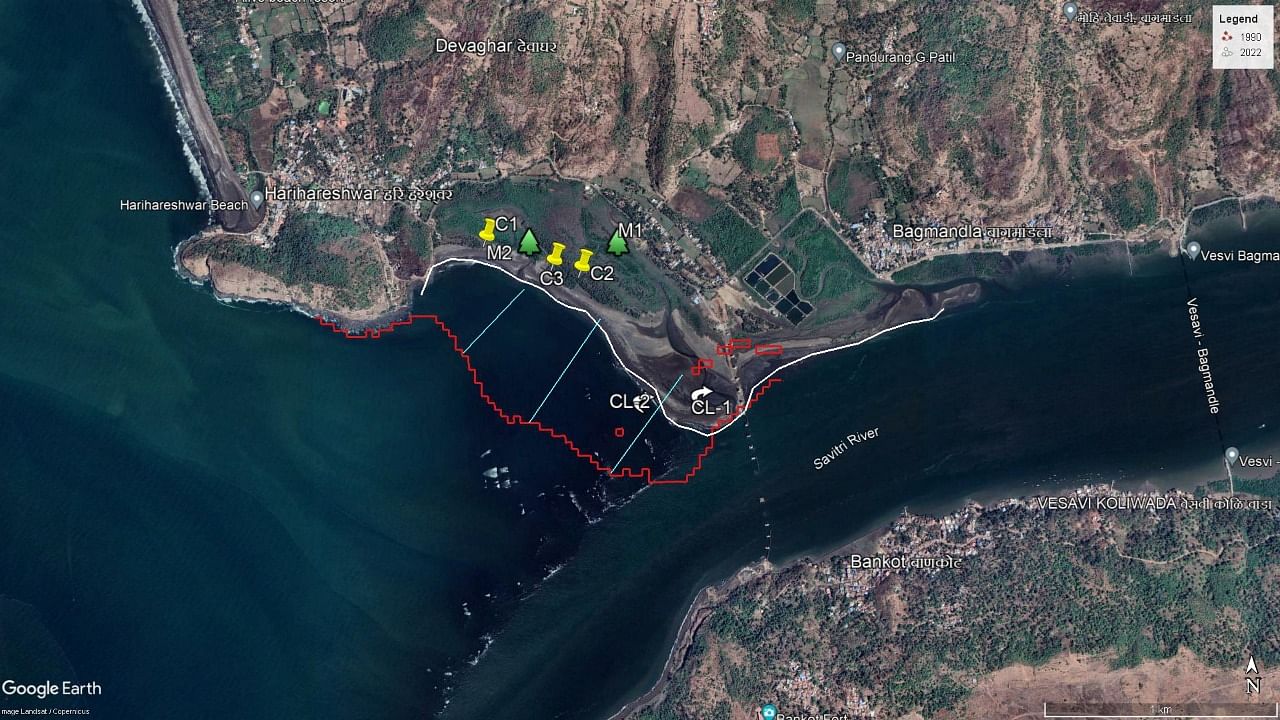
Researchers using satellite images have identified the submergence of an 55-hectare area - nearly ten times the size of Mumbai’s Wankhede Stadium - which has an area of 5.4 hectare -- near Devghar in Raigad district.
It clearly indicates a worrying sign that of coastal inundation and extreme shoreline erosion.
The Srushti Conservation Foundation (SCF), a non-profit organisation based in Pune, conducted the study close to the mouth of Bankot Creek, which has a 1.5-km-long beach area.
Preliminary data show that between 1990 and 2022, there was a total loss of around 55 hectare of coastal ecosystems, including mangrove, creeklets, mudflats, and sandy coasts, and that almost 300 metres of shore area was eroded.
In order to produce a thorough report to assist policymakers on the subject of coastal inundation and land degradation, SCF is continuing its overall study on coastal inundation by developing satellite datasets all along the Maharashtra coastline.
Last year, SCF released its assessment of the shrinking width of creeks and waterways along the Mumbai Metropolitan Region and succession of mangroves over 60 sq km of agricultural land along Karanja Creek.
The latest study was prompted by information shared by Devghar residents on how this beach had been steadily eroding since the 1990s. The researchers ran a preliminary analysis to determine the degree of erosion since the 1990s and assembled Landsat (satellite) datasets using the Google Earth Engine to look into the claim.
“It was observed that the satellite-derived shoreline (unsupervised classification-based waterbody boundary) had shifted 300-500 meters towards land. Apart from this, it was clear that mangrove and Casuarina plantation was also not able to withstand the loss of sediment and eventually they got uprooted,” said Dr Deepak Apte, Managing Director, SCF.
At present, the Casuarina plantation (Coastal She-oak or Sura in Marathi) extends along the north-south belt on Devghar Beach. However, the beach-side plantation was found to be getting destroyed due to continuous loss of sediment resulting in the erosion of the shore and also change in sediment profile from a clay-silty dominated seascape to coarse sand dominated seascape, the analysis read.
The satellite images further showed that mangroves were distributed unevenly in this patch. In the central part of this patch, dead mangroves were observed on a large scale. In the peripheral areas of this patch, mangroves were dominated by the bushy and sparsely distributed Avicennia marina (gray mangrove). The inner areas were dominated by Rhizophora mucronata (Asiatic mangrove). In exceptional cases, Aegiceras corniculatum (black mangrove) could be observed along with Acanthus ilicifolius (Sea Holly).
In 2020, the landfall of Cyclone Nisarga, close to the coast of Devghar, saw the death of trees, shrubs, and (approximately 5 hectare) of mangrove species like Avicennia marina. “Some of these patches are now recovering but large tracts of mangrove are already on the verge of death, most probably due to a shift in sediment structure from muddy to sandy nature,” said Apte.